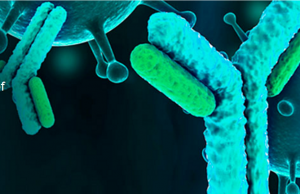 Quantitation of monoclonal antibodies (mAbs) in biological fluids is important during all stages of antibody drug development. First developed in the 1970s, therapeutic mAbs have both research and medicinal impact as they can be used for diagnosis and treatment of a wide variety of diseases, and have a high level of specificity.
Quantitation of monoclonal antibodies (mAbs) in biological fluids is important during all stages of antibody drug development. First developed in the 1970s, therapeutic mAbs have both research and medicinal impact as they can be used for diagnosis and treatment of a wide variety of diseases, and have a high level of specificity.
Taking upwards of 10 years to bring a therapeutic mAb to market, discovering effective, high-throughput analysis methods is prudent for pharmaceutical companies to help bring these new therapies to market.
Although traditional immunoassays are typically used for biotherapeutic bioanalysis, more recently LC-MS is adopted because of its high selectivity, accuracy, and precision. In this technote, “Improving Sensitivity for an Immunocapture LC-MS Assay of Infliximab in Rat Plasma Using Trap-and-Elute MicroLC-MS,” researchers present results of samples prepared using a generic anti-human IgG immunocapture workflow.
In this method, researchers used the selective extraction of human IgG antibodies from rat plasma and then compared the use of High Flow LC-MS and Trap-Elute MicroLC-MS methodologies.
Discover how the trap-elute method ensures similar throughput to the conventional high-flow LC-MS workflow, while injecting the same 20 µL of sample, but offers enhanced protection of the MicroLC column and the MS from contamination, thus providing a more robust method.
The utilization of a trap-elute MicroLC-MS method provides a solution for applications where mAbs need to be quantified in small volume samples and at low concentrations.Learn more about micro-LC products can enhance your biologics bioanalysis studies >
As of summer 2016, 30 monoclonal antibodies (mAbs), had been approved for the treatment of certain cancers, autoimmune and infectious diseases, with even more in development.






 Contact Support
Contact Support
0 Comments